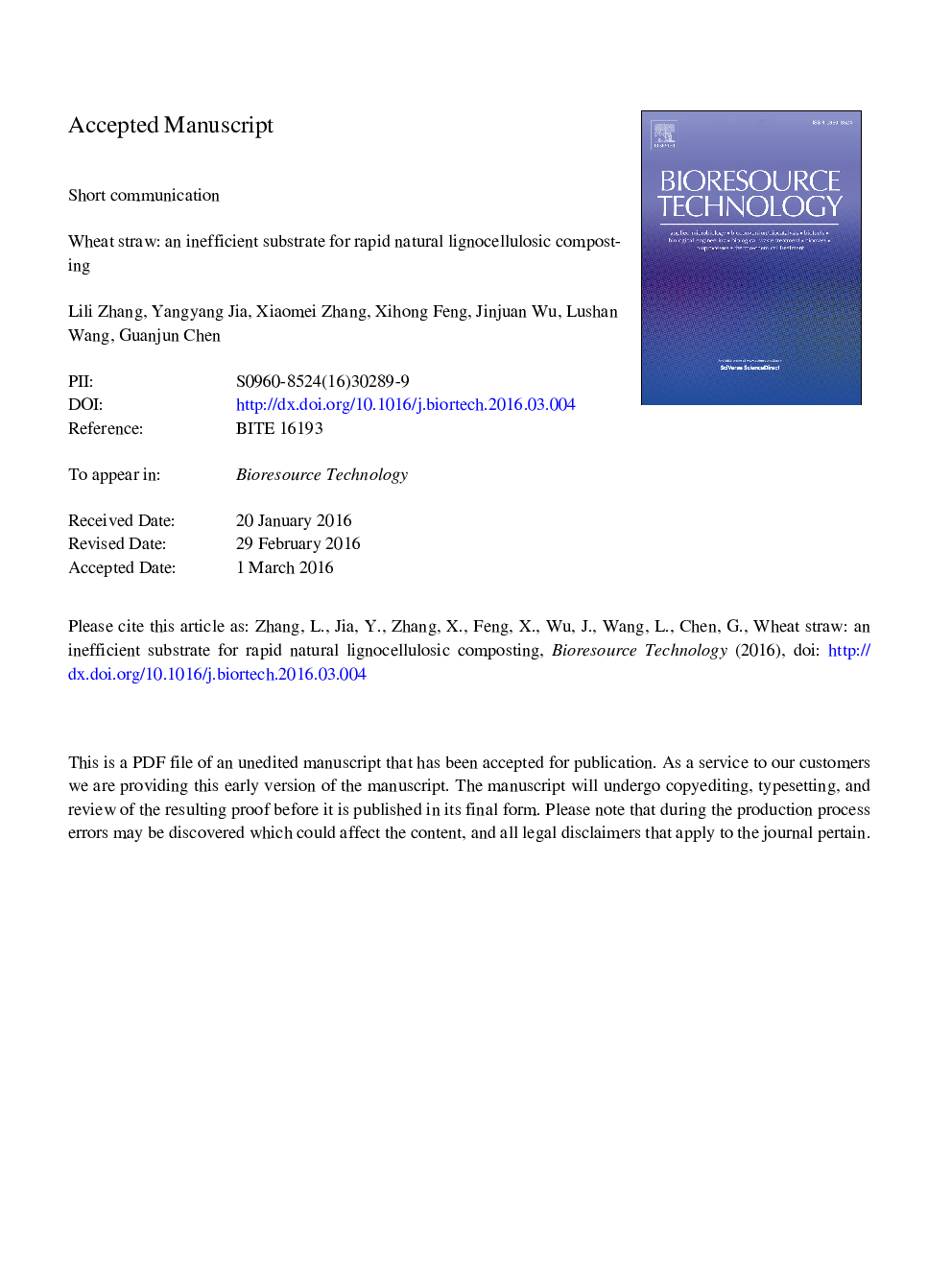| Article ID | Journal | Published Year | Pages | File Type |
|---|---|---|---|---|
| 679221 | Bioresource Technology | 2016 | 18 Pages |
Abstract
Composting is a promising method for the management of agricultural wastes. However, results for wheat straw composts with different carbon-to-nitrogen ratios revealed that wheat straw was only partly degraded after composting for 25Â days, with hemicellulose and cellulose content decreasing by 14% and 33%, respectively. No significant changes in community structure were found after composting according to 454-pyrosequencing. Bacterial communities were represented by Proteobacteria and Bacteroidetes throughout the composting process, including relatively high abundances of pathogenic microbes such as Pseudomonas and Flexibacter, suggesting that innocent treatment of the composts had not been achieved. Besides, the significant lignocellulose degrader Thermomyces was not the exclusively dominant fungus with relative abundance only accounting for 19% of fungal communities. These results indicated that comparing with maize straw, wheat straw was an inefficient substrate for rapid natural lignocellulose-based composting, which might be due to the recalcitrance of wheat straw.
Keywords
Related Topics
Physical Sciences and Engineering
Chemical Engineering
Process Chemistry and Technology
Authors
Lili Zhang, Yangyang Jia, Xiaomei Zhang, Xihong Feng, Jinjuan Wu, Lushan Wang, Guanjun Chen,
